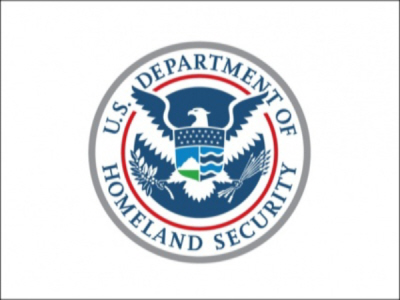This year we have been working to deliver a “CPO Rising Virtual Roundtable” series, sponsored by IBM. Each of the roundtables brings together three or four leading Chief Procurement Officers to discuss a specific topic in depth and share their insights, experiences, plans, and recommendations. In each of these, I serve as host and moderator (click link to listen).
 Our profile series of the Chief Procurement Officers who participated in our first CPO Rising Virtual Roundtable series, continues with part two (of three) of our profile on Dr. Nick Nayak, Ph.D., former Chief Procurement Officer (CPO) for the Department of Homeland Security (DHS). In our first article, we profiled Dr. Nayak’s education, career, and rise to become the longest serving CPO at DHS. Today’s article will take a closer look at DHS, as described by Dr. Nayak, including its history, procurement infrastructure, mission, goals, and key challenges that are unique to public sector procurement.
Our profile series of the Chief Procurement Officers who participated in our first CPO Rising Virtual Roundtable series, continues with part two (of three) of our profile on Dr. Nick Nayak, Ph.D., former Chief Procurement Officer (CPO) for the Department of Homeland Security (DHS). In our first article, we profiled Dr. Nayak’s education, career, and rise to become the longest serving CPO at DHS. Today’s article will take a closer look at DHS, as described by Dr. Nayak, including its history, procurement infrastructure, mission, goals, and key challenges that are unique to public sector procurement.
Although homeland security has been in the American lexicon for 13 years now, DHS is a relatively new federal agency that consolidates 22 legacy and newly-created agencies. Just 11 days after the terrorist attacks of September 11, 2001, Pennsylvania Governor, Tom Ridge, was named the first Director of the Office of Homeland Security in the White House. Following the passage of the Homeland Security Act in November 2002, the Office became “a stand-alone, Cabinet-level department to further coordinate and unify national homeland security efforts.” On March 1, 2003, DHS became operational.
Like many other parts of DHS, its procurement corps serves the greater organization, whose mission is to protect the United States and help its citizens recover from disasters. To those ends, DHS has an annual budget of around $60 billion and roughly 240,000 employees worldwide, and it spends about $18 billion to protect the country and its citizens.
“Anywhere you go in the country where you can see DHS in action – and you can’t always see it – [they’re] doing things to protect the country,” observes Dr. Nayak. “I guarantee that you will see a DHS employee and you will see something that was procured. And I say that because procurement is so integral to protecting the country, so it gets a seat at the highest levels, at the table. And so you’ve got to have the private sector engaged, because they’re the ones who are supplying these things that are helping us protect the country.”
To execute this vast procurement mission, DHS employs more than 1,400 procurement officers who are spread out and operate in nine different contracting organizations, or components. These components include Customs and Border Protection (CBP), the Federal Emergency Management Agency (FEMA), the Transportation Security Administration (TSA), and a half dozen others. Procurement officers in these agencies “have a dotted-line relationship to the CPO – a tight one,” notes Dr. Nayak. So although procurement at DHS is not centralized, it is center-led.
One overarching theme for the procurement team at DHS is to buy things to protect the country (their mission) at the least cost to the American tax payer while fulfilling public policy (their objectives). To use the example of procuring for the U.S. Coast Guard (another DHS “component” or organization): it’s not enough to buy a ship; DHS procurement officers must do so efficiently and cost effectively while ensuring that they’re awarding contracts to small businesses to source parts and services. Unlike in the private sector, awarding contracts to small businesses, particularly service-disabled, veteran-owned small businesses (SDVOSB), women-owned, and minority-owned businesses are key public policy initiatives. As a result, it’s procurement’s job at DHS to ensure that their efforts are consistent with that public policy.
There are several other key differences in how public-sector organizations like DHS source goods and services as compared to private-sector organizations. Government procurement officers are accountable to the taxpayers, while corporate procurement officers are accountable to shareholders and customers. It may not seem like much of a distinction, but unlike private-sector organizations, all citizens have a stake in what the government provides – whether it’s protection from terrorist threats, securing our nation’s borders and ports, or responding to natural disasters. As a result, DHS procurement officers have a solemn obligation to its citizenry.
Also, unlike private-sector procurement regulations, Federal Acquisition Regulations (FAR) mandate that there must be competition amongst vendors and suppliers, and that the government cannot retain a preferred supplier unless the given contract was re-bid. Furthermore, due to the nature of the federal budgeting process, contracts are awarded in one-year increments, with a number of option years following, provided that the supplier or vendor meets satisfactory performance measures and there is funding for follow-on years. [Editor’s note: as a former DHS subcontractor, I can attest to these contractual nuances, and indeed staked my livelihood on them for a number of years.] Combined, these two regulations unique to public-sector procurement often make it difficult for DHS and other federal procurement agencies to effectively execute a strategic sourcing program wherein they can easily retain preferred suppliers. Constantly sourcing goods and services from new and different suppliers can be a drain on time and resources, but fortunately, DHS and other federal procurement organizations can exercise option years and retain preferred suppliers for at least a number of years.
Given the size of DHS and the scope of its various missions, DHS has a large and diverse supplier base, even if it is unable to retain as many of them each year as may be preferable, or even, optimal. When looking at the specific strategies DHS implemented to maximize spend with their suppliers. Dr. Nayak, says DHS’s strategic sourcing program looks across its spend as best as it can, with multiple spend analysis programs. Where they can group categories together and leverage their buying power, they have done it. And, of the $18 billion that the Department spends on goods and services, $12 billion of that is spent on contracting. Roughly a quarter of that is strategically sourced through contracting vehicles that allow everyone at DHS to use them. The other $5 billion or so is spent on interagency agreements (between other DHS agencies like FEMA and TSA, as well as agencies outside of DHS, like the FBI).
In addition to leveraging its diverse supplier base as best as it can, the DHS procurement teams are doing many things to create more value like using tools like reverse auctions to drive down costs where they can and investing in training their people. For example, DHS procurement officers learn the art of negotiation, because negotiation skills are critical in this people-intensive business. DHS also trains its staff how to be better buyers, and how to use technology solutions that allow them to stay current as the market evolves. Dr. Nayak , in fact, created the Homeland Security Acquisition Institute that trains its procurement staff, one of the many ways that he has impacted the organization since becoming its Chief Procurement Officer in October of 2010.
Dr. Nayak’s impact on the DHS procurement organization is both far and wide – certainly beyond the scope of this article. Fortunately, the next article in our series will examine the many ways that Dr. Nayak has affected positive change in his time at DHS.
RELATED ARTICLES
Dr. Nick Nayak – A Profile of a Public-Sector Chief Procurement Officer
Announcing The 2014 Chief Procurement Officer (“CPO”) Virtual Roundtable Series
Becoming a CPO in 2014 – The CPO’s Perspective
The Role of CPO Remains a Work in Progress

